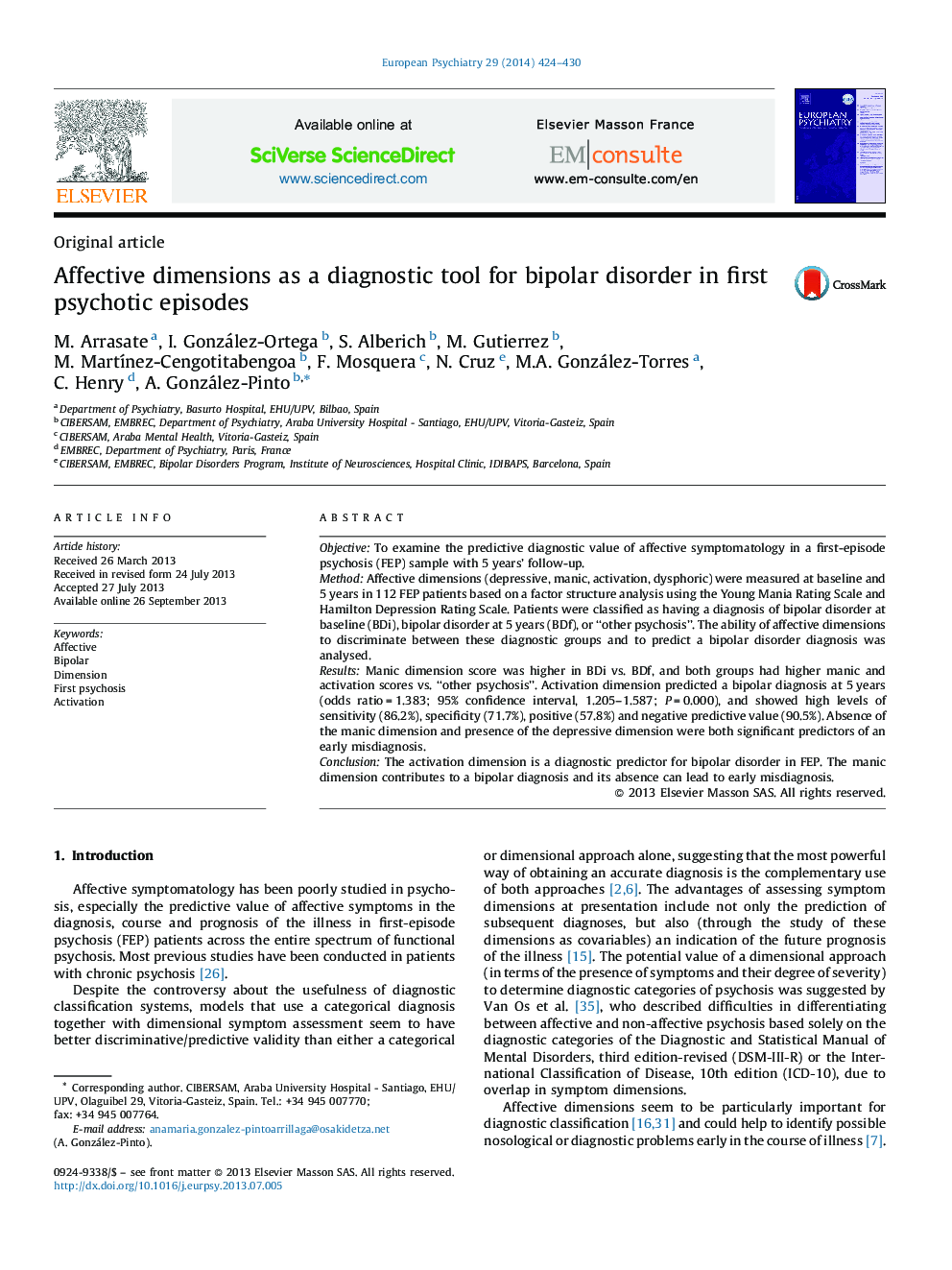| Article ID | Journal | Published Year | Pages | File Type |
|---|---|---|---|---|
| 4184023 | European Psychiatry | 2014 | 7 Pages |
ObjectiveTo examine the predictive diagnostic value of affective symptomatology in a first-episode psychosis (FEP) sample with 5 years’ follow-up.MethodAffective dimensions (depressive, manic, activation, dysphoric) were measured at baseline and 5 years in 112 FEP patients based on a factor structure analysis using the Young Mania Rating Scale and Hamilton Depression Rating Scale. Patients were classified as having a diagnosis of bipolar disorder at baseline (BDi), bipolar disorder at 5 years (BDf), or “other psychosis”. The ability of affective dimensions to discriminate between these diagnostic groups and to predict a bipolar disorder diagnosis was analysed.ResultsManic dimension score was higher in BDi vs. BDf, and both groups had higher manic and activation scores vs. “other psychosis”. Activation dimension predicted a bipolar diagnosis at 5 years (odds ratio = 1.383; 95% confidence interval, 1.205–1.587; P = 0.000), and showed high levels of sensitivity (86.2%), specificity (71.7%), positive (57.8%) and negative predictive value (90.5%). Absence of the manic dimension and presence of the depressive dimension were both significant predictors of an early misdiagnosis.ConclusionThe activation dimension is a diagnostic predictor for bipolar disorder in FEP. The manic dimension contributes to a bipolar diagnosis and its absence can lead to early misdiagnosis.
